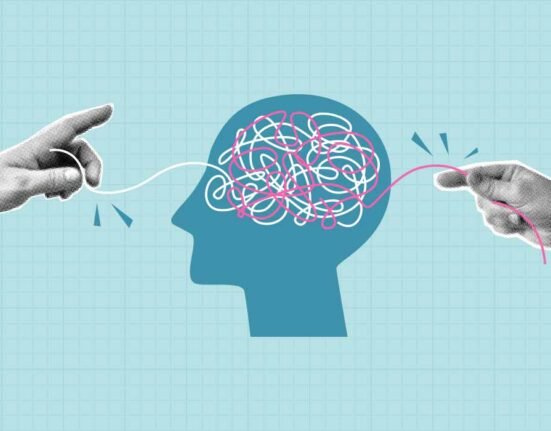Reparenting is a self-care method by which individuals consciously provide themselves with the nurturing, safety, and emotional support that may have been lacking in their early developmental years. Reconnecting with the “inner child” is the central aspect. Doing so would take them back to memories of unmet needs, neglect, or trauma; later, offering the inner child care, safety, and expectations of a secure caregiver would. Drawing heavily on psychoanalytic traditions, in particular, the work of Freud and Jung, as well as that of the attachment theory of Bowlby and Winnicott. Both of them spoke about how early caregiving deficits lead to lifelong problems with emotional regulation, self-esteem and relationships.
Read More: Reality of Emotional Support Services in India
Theoretical Foundations
Reparenting is entwined with the critical elements of attachment theory. According to Bowlby, secure attachment is the basis of resilience and healthy development. Likewise, Winnicott imagines a fostering sanctuary as what he calls the “holding environment” in which a child can grow. By reparenting, we fill in the gaps and create for ourselves a place where our adult selves can come back to themselves with empathy and unconditional acceptance. Inner child work has been promulgated by writers like John Bradshaw, whose “Homecoming” long associated inner child work with healing. This is often referred to as ‘Inner Child Therapy’ in psychotherapy, and that involves going back to where the pain happened in our past (which is usually childhood) and working on it with love.
Read More: The Art of Self-Discovery in Psychotherapy
Integrating Mind and Body
Reparenting is both cognitive and an embodied form of healing. Trauma, the emotional wounds that we carry around with us, manifests as tension, pain, discomfort, or postural patterns(Mayor, S. J., 2015). Reparenting, therefore, includes:
1. Mindfulness and meditation: Encouraging awareness of thoughts and emotions without judgment, connecting people with the present.
2. Somatic Therapies: Sensorimotor psychotherapy and other body-oriented practices focus on releasing the trauma energy stuck in our bodies.
3. Breathing and grounding techniques to calm the nervous system and create a sense of internal safety.
By doing these, touch reconnects the mind and body and thus helps for a more grounded sense of safety and emotional regulation.
Read More: The Psychology Behind Manifestation
Key Practices in Reparenting Yourself
While the exact process is highly individualised, effective reparenting might look something like this:
1. Discovering childhood needs that have been unmet: Revisiting the past to reveal what type of care was missing.
2. Cultivating self-kindness and patience: Turning your inner critic into a best friend who shows kindness and patience.
3. Creating healthy rituals: Journaling, meditating or any form of exercise that can create emotional safety.
4. Establishing healthy limits: Saying no and protecting well-being.
Read More: Mindfulness: A Journey towards Inner Peace and Calm
Correcting Negative Self-Concepts
Early experiences of neglect or abuse can lead to experiences that can generate feelings of worthlessness or being unlovable. Reparenting works by challenging these scripts and grows from self-compassion and acceptance. In doing so, people can change negative internal scripts for positive ones, which are crucial in developing longer-term psychological resilience. This simulates the remedial elements of a positive therapeutic relationship and enables previous wounds to be retraced, relived and reworked in an appropriate and safe setting. With time, this leads to improved self-esteem, emotional stability and healthier relationships (Copley, L., 2024).
Read More: The Psychology of Self-worth
Spiritual and Transpersonal Dimensions
For some, reparenting also encompasses spiritual work. Buddhist methods like loving-kindness meditation develop self-compassion and emotional balance. A few meditation retreats in China integrate inner child work with mindfulness to do both emotional and somatic trauma processing. When spirituality is combined with psychotherapeutic perspectives, reparenting evolves into a comprehensive form of healing that integrates emotional, somatic, and spiritual practices (Lau, N., 2021).
Read More: Breathing Techniques for Stress Relief and Emotional Balance
Benefits and Evidence
Clinical observations and qualitative studies suggest that these reparenting interventions might lead to:
- Greater emotional awareness and expression: Recognising and expressing emotions more clearly, leading to healthier relationships.
- Improved self-regulation and stress management: Somatic practices and mindfulness help manage stress and reduce reactivity.
- Increased self-esteem and compassion: Shifting from self-criticism to self-acceptance strengthens confidence and kindness toward oneself.
- Decreased anxiety, depression and trauma symptoms: Addressing root causes promotes long-term mental well-being.
Not surprisingly, participants described a very similar experience when the embodied practices were combined with relational therapy; their capacity for emotional release and coping skills increased (Mayor, S. J., 2015). Historical contributions from figures like Bradshaw have helped legitimise the approach in both Western and Eastern contexts.
Read More: Why Is It Important To Develop Self–Compassion?
Practical Guidelines for Self-Reparenting
Reparenting is something you can also practice on your own, but in the case of needing to work deeper into the trauma, it is recommended that an experienced professional guide you through this type of process. Best practices include:
1. Initiating small: Progressing with self-trust, step by step.
2. Structured reflection: journaling, or guided meditations to connect needs to memories.
3. Bringing it all together: Reflective and somatic practices to support soul-level healing.
4. Seeking support networks: Involving a therapist, a group of people who understand you, or an individual who can validate.
Read More: Healing Your Inner Child
Challenges and Limitations
Reparenting is a gradual process and needs patience, self-awareness and most importantly, courage to revisit painful experiences. Going back to work on the early traumas without proper therapeutic support may indeed be daunting for some. Furthermore, despite its broad application in clinical practice, it warrants more long-term empirical research to strengthen its evidence base.
Read more: 10 Signs Your Inner Child Needs Healing
Conclusion
Reparenting yourself gives a way to repair early emotional wounds by providing yourself with the safety, empathy, and care that you may not have experienced in childhood. It is a therapy-based self-healing trend that integrates psychoanalytic constructs, mindfulness meditation, attachment theory, and embodied therapeutic techniques. But whether done as a stand-alone practice or in therapy, reparenting promotes compassion and resilience within ourselves, which can lead to healthier relationships and an overall better life.
FAQ’s
1. What does reparenting yourself mean?
It refers to consciously giving yourself the care, safety, and emotional support that may have been missing during childhood.
2. Is reparenting based on any psychological theories?
Yes, it draws from psychoanalytic traditions, Bowlby’s attachment theory, and Winnicott’s concept of the holding environment.
3. Can reparenting be done without a therapist?
Yes, some practices can be self-directed, but professional guidance is recommended for processing deeper trauma.
4. How does reparenting involve the body?
It uses mindfulness, somatic therapies, and body-oriented practices to release trauma stored physically and restore emotional regulation.
5. What benefits can reparent bring?
It can improve self-esteem, emotional awareness, resilience, and the ability to maintain healthy relationships.
References +
Lau, N. (2021). Teaching Transnational Buddhist Meditation with Vipassanā (Neiguan 內觀) and Mindfulness (Zhengnian 正念) for Healing Depression in Contemporary China. Department of Special Education and Counselling, The Education University of Hong Kong https://doi.org/10.3390/rel12030212
Mayor, S. J. (2015). Towards A Relational Understanding of Embodied Therapeutic Relationships: A Qualitative Study of Body-Focused Practitioners’ Experiences. Faculty of Health and Life Sciences, University of the West of England, Bristol. https://uwe-repository.worktribe.com/OutputFile/834290
Copley, L. (2024). Reparenting: Seeking Healing for Your Inner Child. Positive Psychology. https://positivepsychology.com/reparenting













Leave feedback about this